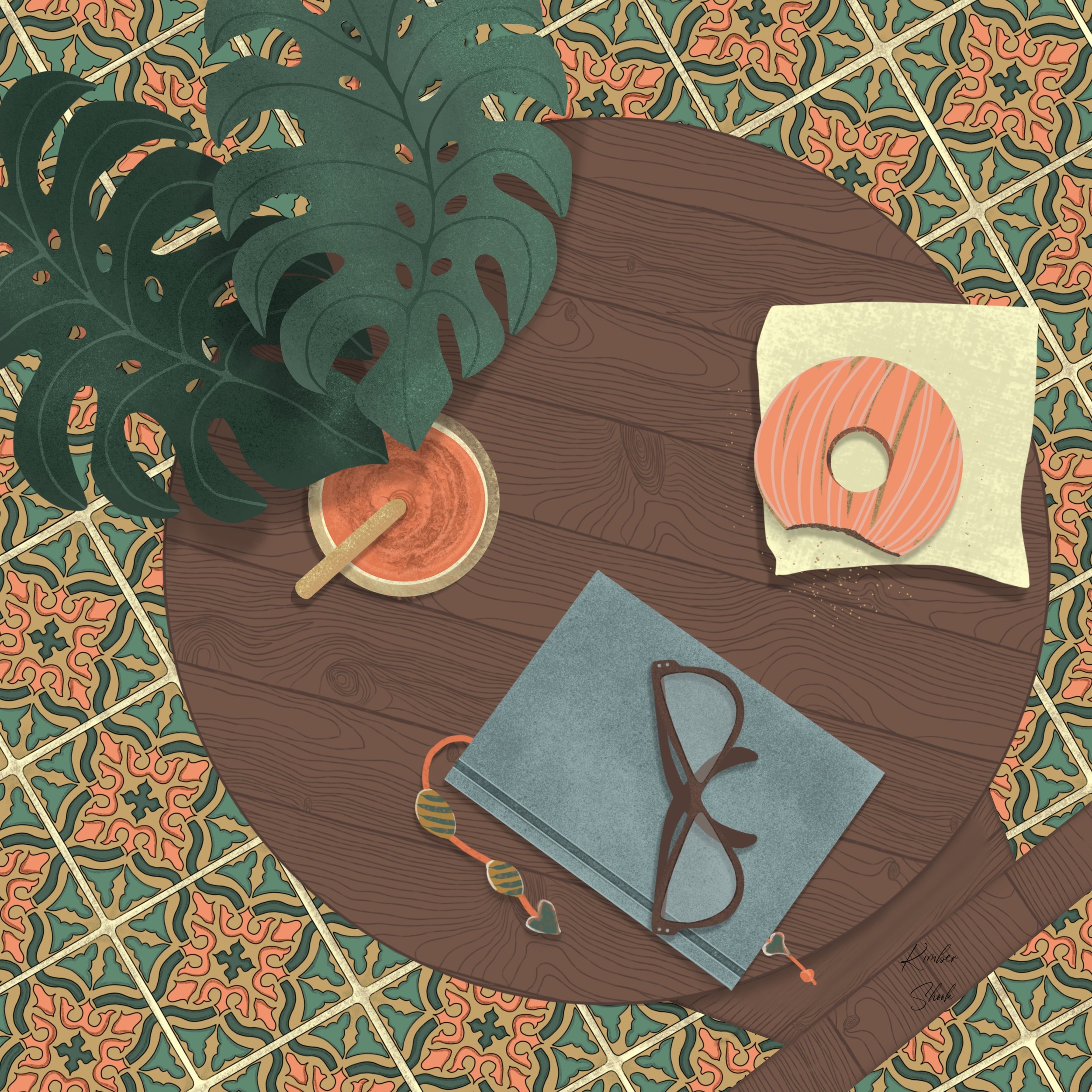Digital Art
Cafe Relax - Flay Lay Illustration
Digital art refers to artistic creations that are produced or presented using digital technology. It encompasses a wide range of art forms, including digital painting, 3D modeling and animation, digital photography, multimedia installations, and more. Digital artists use software, computer programs, and electronic devices to create their works.
There are several benefits associated with digital art:
1. Accessibility: Digital art has made the creation and distribution of art more accessible than ever before. Artists can create digital art using affordable tools like graphic tablets or even just a computer and software. Moreover, digital art can be easily shared and exhibited online, reaching a global audience.
2. Versatility: Digital art provides artists with a wide range of possibilities and techniques. Various software programs offer extensive tools and features that allow artists to experiment with different styles, textures, colors, and effects. Artists can combine traditional art techniques with digital tools, pushing the boundaries of creativity.
3. Editability and Non-Destructive Workflow: One significant advantage of digital art is the ability to make non-destructive edits. Artists can easily undo or modify their work without damaging the original piece. This flexibility allows for experimentation and iterative refinement, enabling artists to explore different directions and make adjustments effortlessly.
4. Efficiency and Productivity: Digital art tools often provide features that enhance productivity. For example, artists can save and reuse custom brushes, create layers to organize their artwork, and take advantage of shortcuts and automation. These features can help artists work more efficiently and speed up the creative process.
5. Collaboration and Community: The digital realm fosters a vibrant community of artists who can connect, collaborate, and learn from one another. Online platforms, social media, and dedicated art communities provide spaces for artists to share their work, receive feedback, and engage with a supportive network. This sense of community and collaboration can be motivating and inspiring for artists.
6. Preservation and Durability: Digital art can be easily stored, preserved, and reproduced without any degradation in quality. Unlike traditional art forms that may deteriorate over time or be susceptible to physical damage, digital art can exist in a digital format indefinitely, ensuring its longevity and accessibility for future generations.
7. Exploring New Avenues: Digital art opens up possibilities for innovative and experimental approaches to art. It allows for the integration of interactive elements, virtual reality (VR), augmented reality (AR), and other emerging technologies, expanding the boundaries of artistic expression and engaging viewers in new and immersive ways.
These are just a few of the benefits associated with digital art. As technology continues to advance, digital art is likely to evolve further, providing artists with even more opportunities for creativity and expression.
As for myself, I’ve been creating digital art over the last couple years. I love the flexibility and the freedom it allows my creativity to soar. I’ve created passive income with my Procreate brushes, stamps as well as my surface design patterns. I’ve learned so much that I’m confident in teaching others on ways to earn extra money with their creations along with ideas in how to repurpose their art.
Time is precious and limited so I love creating a plan in advance to repurpose Art and ideas for additional ways to earn extra money. I hope by following me through my journey, I can inspire and perhaps even sow some creative ideas into the fields of your mind.
